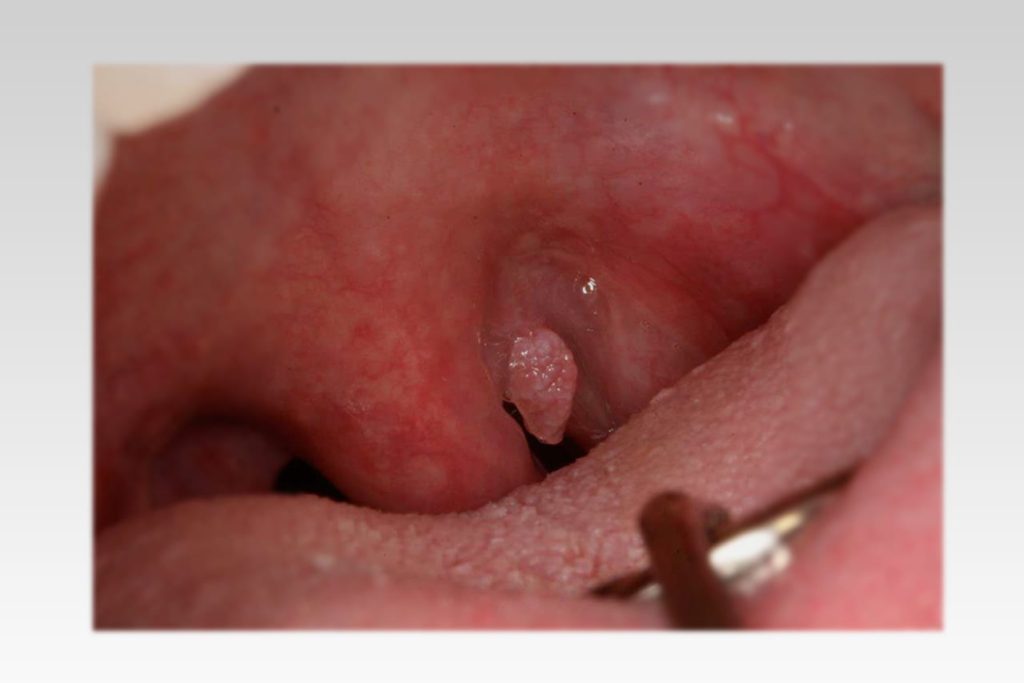HPV and Throat Cancers: What Do I Look Out For?

Have you heard of Human Papilloma Virus (HPV)? Human Papilloma Virus (HPV) infection in Singapore causes many cancers such as cervical cancer, anal cancer and also throat, tongue and tonsil cancers. In fact, TWO-THIRDS of throat, tonsil and tongue cancers are associated with HPV infection! At the ENT specialist clinics in Singapore, the ENT doctors see many patients with throat symptoms such as sore throat, itchy throat and a feeling of something stuck in the throat. Some of these ENT patients turn out to have tonsil lumps or strange lumps growing from the back of their throat. If the lumps look warty (lots of little bumps seen on the surface like the throat lump in above picture), then this is likely to be related to Human Papilloma Virus (HPV) infection as a cause.
In the past, the main risk factors for developing throat cancers were smoking and alcohol. But with the discovery of HPV’s presence in many throat, tonsil and tongue cancers, HPV is now well-recognised as another risk factor for throat cancers, with HPV 16 as the main viral strain found. HPV infection is mainly transmitted through sexual contact, usually oral sex. Naturally, this can be a tricky and awkward topic to discuss with patients, especially if they are accompanied by their wife or husband, or parents! “Where have I caught HPV from, Dr?!”
Some female patients have turned up to see me as their ENT doctor in Singapore, after having had a positive (abnormal) HPV test on their recent cervical PAP smear. They were worried that they may also have HPV infection in their mouth or throat, which could potentially increase their risk of them going on to develop HPV-related cancers of the throat, tonsil and oral cavity. Approximately 7% of people in the United States between the ages of 14 and 69 already have HPV infection present in their throats.
So when we see patients like them or other patients with symptoms such as persistent sore throat, throat pain, itchy throat, feeling of throat irritation, difficulty swallowing, earache or ear pain, blocked ears, we carefully check their throat and mouth. We use a special endoscope (tiny camera) passed into the nose to examine the rest of the throat and airway. Patients with throat cancers can also present with neck lumps if their lymph glands already contain cancer cells from the original primary tumour.

B: Another large tonsil lump is seen obstructing the back of a 30 year old man’s throat. Both tonsil lumps were biopsied and found to be cancerous, due to HPV infection.
Just because you may have HPV infection in your oral cavity (mouth) or throat, does not necessarily mean that you will go on to develop throat cancer. But the risks are higher if you have oral HPV and the risks of throat cancer are even higher if you also happen to smoke or drink alcohol regularly. Warty lumps (papillomas) should be removed and biopsied: this procedure is usually done as a day surgery case and can be done under local anaesthesia (a numbing injection is given just as if you were at the dentist to minimise any discomfort). The tissue removed can then be sent off for analysis and HPV-16 staining to check for the presence of HPV infection. The good news is that many HPV-related throat cancers have a good outcome if diagnosed and treated early: about 85-90% of patients with HPV-related throat cancers are alive and free of disease at 5 years after treatment for HPV-related throat cancer.
So what can you do to minimise your risk of HPV infection and throat cancer? Here are Dr Annabelle’s 5 helpful tips:
- Don’t smoke.
- Don’t drink large amounts of alcohol regularly.
- Practise safe sex, especially safe oral sex by using protection such as condoms or dental dams (plastic sheets spread over the mouth).
- Check your mouth inside regularly in the mirror for funny lumps or strange patches of different colour on your tongue or back of throat.
- Make sure you receive the HPV vaccine, mainly Gardasil-9, which protects against 9 different cancer-causing HPV strains, as well as those which cause genital warts.
Share this blog via:


